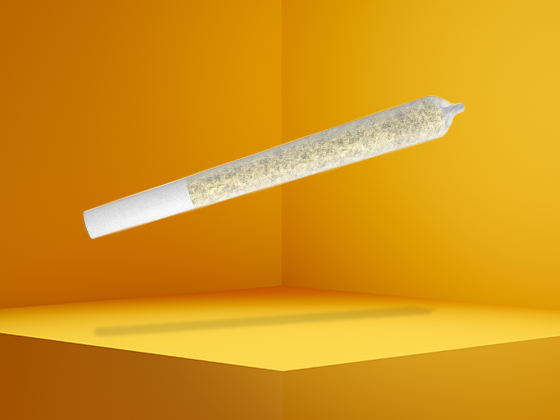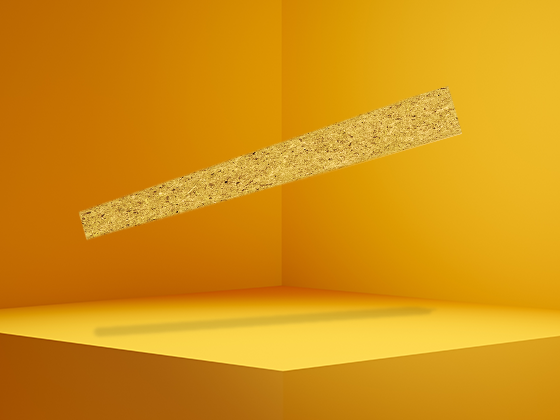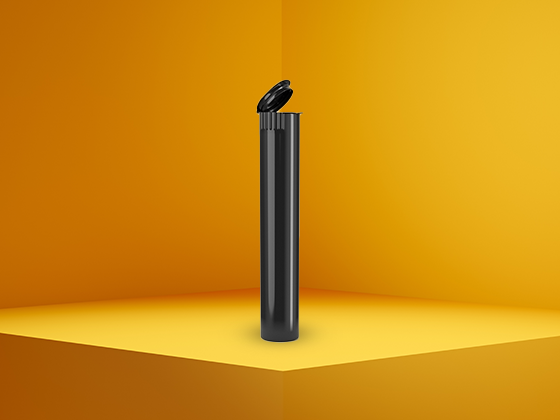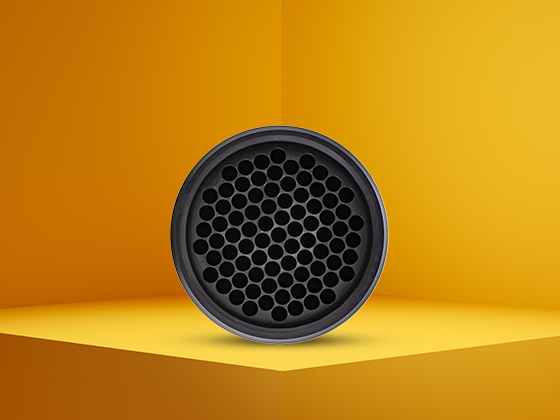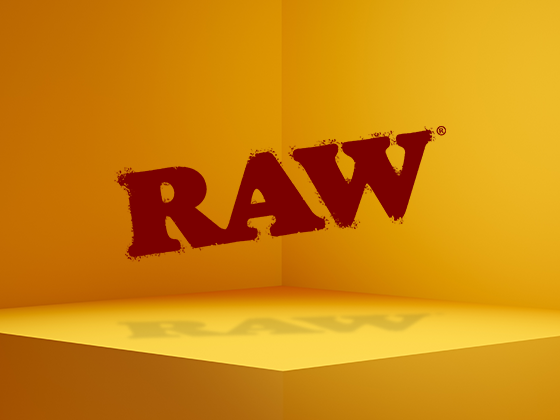Questions
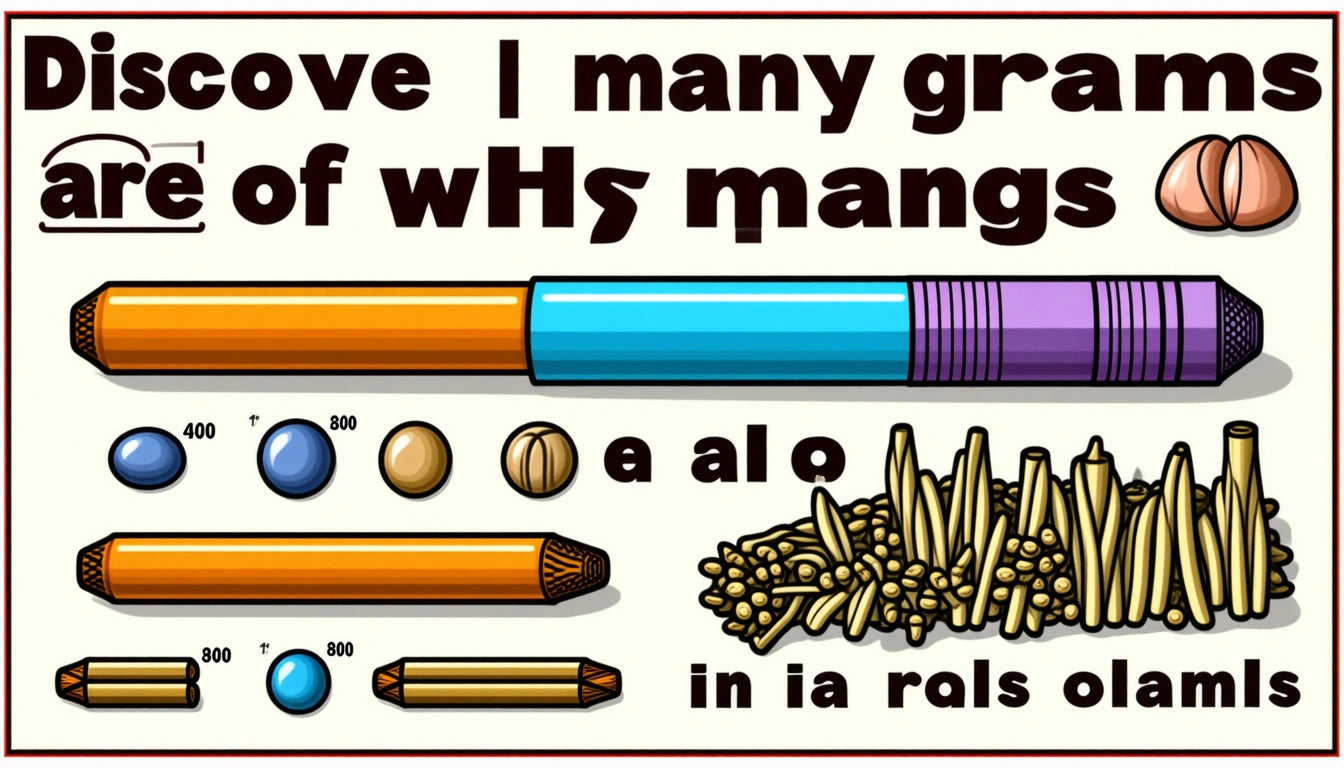
flower
Understanding Pre-Roll Weights: How Many Grams Are in a Pre-Roll?
Table of Contents
Standard Pre-Roll Weights in the Cannabis Industry
Factors Affecting Pre-Roll Weight and Size
Pre-Roll Weight vs. Consumer Experience
Packaging Considerations for Different Pre-Roll Weights
Industry Trends and Future of Pre-Roll Sizing
Pre-rolls have become one of the most convenient and popular cannabis products on dispensary shelves. For consumers and businesses alike, understanding how many grams are in a pre-roll is essential for making informed purchasing decisions and meeting regulatory requirements. This comprehensive guide breaks down the standard weights, variations, and factors that influence pre-roll sizing across the industry.Standard Pre-Roll Weights in the Cannabis IndustryThe cannabis industry has established several standard sizes for pre-rolls, though these can vary by market and manufacturer:
Half-gram (0.5g): Often called "singles" or "pinners," these smaller pre-rolls are ideal for solo sessions or microdosing.
Full gram (1.0g): The most common standard size, offering a balance between convenience and duration.
1.5 gram: A "premium" size that provides a longer session or can be shared among 2-3 people.
2 gram: Typically reserved for specialty products or "king size" offerings.
According to industry pricing guides, the weight directly impacts both production costs and retail pricing, with most dispensaries charging proportionally more for larger pre-rolls.Mini Pre-Rolls and MultipacksThe market has also embraced smaller format pre-rolls, typically in multipacks:
0.3-0.35g mini pre-rolls: Often sold in packs of 5-7
0.25g micro pre-rolls: Available in packs of 8-10
These smaller formats allow consumers to enjoy multiple sessions without committing to a full gram at once, making them increasingly popular for casual users.Factors Affecting Pre-Roll Weight and SizeSeveral factors influence how many grams of weed go into a pre-roll:Paper Size and StyleThe physical dimensions of rolling papers directly constrain how much cannabis can be packed inside:
Standard 1 ¼" papers typically hold 0.5-0.75g
King size papers can accommodate 1-1.5g
Blunt wraps may hold 2g or more
The density of the pack also matters. A loosely packed pre-roll might contain the same weight as a tightly packed smaller one, but will burn differently.Product Type and AdditivesModern pre-rolls often contain more than just flower:
Infused pre-rolls with concentrates may weigh more due to added extracts
Pre-rolls containing a mix of flower and other plant material may have different weights
Premium pre-rolls often contain more cannabis to justify higher price points
As explained in this guide, these variations can significantly impact both the weight and effects of the final product.Highlight: While a standard pre-roll typically contains 0.5-1.0 grams of cannabis, specialty products can range from 0.25g mini rolls to 2g premium offerings.Pre-Roll Weight vs. Consumer ExperienceThe relationship between weight and experience isn't always linear. Several factors beyond just how many grams of weed are in a pre-roll affect the consumer experience:Burn Time and SessionsOn average, consumers can expect:
0.5g pre-roll: 10-15 minutes for a single user
1.0g pre-roll: 20-30 minutes, potentially shareable
2.0g pre-roll: 45+ minutes, typically designed for sharing
The actual burn time can vary based on how the pre-roll is packed, the moisture content of the cannabis, and smoking technique. Many consumers find that properly extinguishing a pre-roll allows them to extend a single product across multiple sessions.Potency ConsiderationsThe THC content often matters more than weight:
A 0.5g pre-roll with 25% THC flower contains approximately 125mg THC
A 1.0g pre-roll with 15% THC flower contains approximately 150mg THC
This means a smaller, higher-potency pre-roll might deliver a stronger experience than a larger, lower-potency option.Packaging Considerations for Different Pre-Roll WeightsProper packaging is essential for preserving pre-rolls and meeting compliance requirements. The weight of pre-rolls directly influences packaging needs:Single Pre-Roll Tubes and ContainersIndividual pre-roll packaging typically accommodates specific size ranges:
76mm tubes for 0.5g pre-rolls
98mm tubes for 1g pre-rolls
109mm tubes for 1.5-2g king size pre-rolls
These containers protect the product's integrity while meeting child-resistance requirements in most markets.Multipack and Retail PackagingFor brands selling multiple pre-rolls together, packaging considerations become more complex. Many producers use custom packaging that displays the total weight prominently. For instance, an eighth (3.5g) of cannabis might be divided into specially designed eighth bags containing either seven 0.5g pre-rolls or three 1g pre-rolls plus a half-gram bonus.According to packaging regulations, all pre-roll packaging must clearly state both individual and total weights to meet compliance standards in most markets.Industry Trends and Future of Pre-Roll SizingThe pre-roll market continues to evolve, with several emerging trends in product sizing and presentation:Market DiversificationThe industry is moving beyond the standard 1g pre-roll, with increased segmentation:
Micro-dose options (0.25-0.35g) for controlled experiences
Premium oversized options (2-3g) for special occasions
Variety packs containing multiple weights and strains
Leading brands like those featured in top pre-roll brand listings are innovating with unique size offerings to differentiate themselves in an increasingly competitive market.Consumer Education and TransparencyAs the market matures, consumers are becoming more knowledgeable about pre-roll weights and their relationship to value. Brands are responding with:
Clearer labeling of weights and potency
Educational materials about appropriate serving sizes
Transparent pricing models based on weight and quality
This evolution suggests that understanding how many grams are in a pre-roll will remain an important consideration for both consumers and businesses in the cannabis industry.
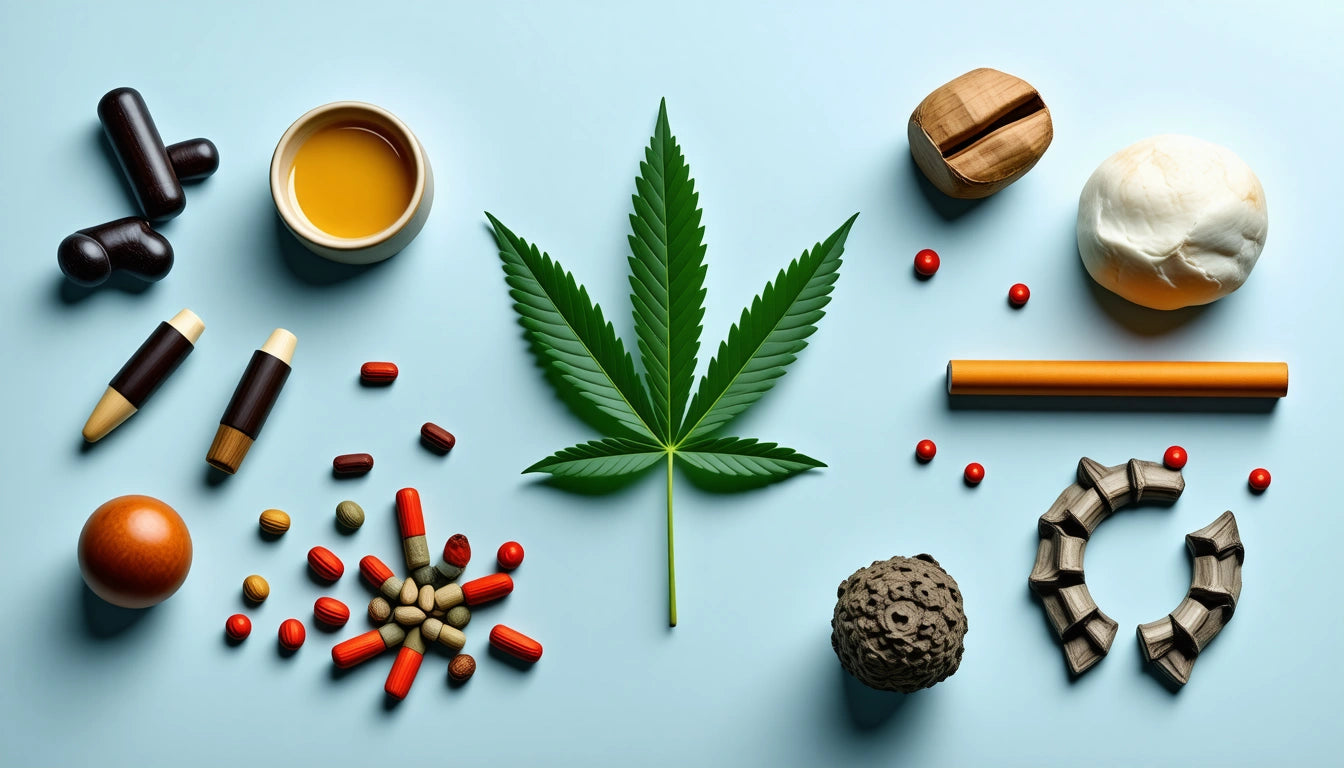
flower
How Many Joints Can You Roll with 3.5 to 7 Grams of Cannabis?
Table of Contents
Understanding Cannabis Measurements
Factors Affecting Joint Quantity
How Many Joints from 3.5 Grams
Joint Yield from 7 Grams
Maximizing Your Cannabis
Storage Considerations
Practical Tips for Efficient Rolling
Understanding how many joints you can roll with your cannabis purchase is essential for both recreational users and those who need to budget their medicine. Whether you're wondering how many joints can 3.5 grams roll or planning for a larger 7-gram purchase, this guide will help you maximize your flower and improve your rolling techniques.Understanding Cannabis MeasurementsBefore determining joint quantity, it's important to understand common cannabis measurements:
1 gram: A single gram is roughly the size of a grape
3.5 grams: Also known as an eighth (1/8 oz)
7 grams: Commonly called a quarter (1/4 oz)
14 grams: A half-ounce
28 grams: A full ounce
These measurements form the basis for cannabis purchases in legal markets. According to research on cannabis measurements, understanding these units helps consumers make informed decisions.Factors Affecting Joint QuantityJoint Size PreferencesThe number of joints you can roll depends significantly on your preferred size:
Small/pinner joints: 0.3-0.5g each
Standard joints: 0.5-0.7g each
Large joints: 0.7-1g+ each
Personal preference varies widely. Some users prefer smaller, more discreet joints while others enjoy larger ones for sharing or longer sessions.Rolling TechniqueYour rolling skill directly impacts how efficiently you use your cannabis. Beginners often use more cannabis than necessary due to inexperience. Mastering proper rolling techniques can help you create well-burning joints while conserving flower.Grind ConsistencyA proper grind ensures even burning and optimal packing density. Too fine a grind might burn too quickly, while chunks that are too large create an uneven burn and waste cannabis.How Many Joints from 3.5 GramsIf you're wondering how many joints can you roll with a 3.5, here's a practical breakdown:
Small joints (0.3g): Approximately 10-12 joints
Standard joints (0.5g): About 7 joints
Large joints (0.7g): Around 5 joints
Extra large (1g): 3 joints with some leftover
According to our analysis of joint quantities, an eighth (3.5g) is the most common purchase amount for regular cannabis consumers, offering a good balance between variety and value.Highlight: Most consumers can roll 5-7 standard-sized joints from 3.5 grams of cannabis, though this varies based on rolling technique and joint size preference.Joint Yield from 7 GramsWhen considering how many joints can 7 grams roll, the numbers approximately double:
Small joints (0.3g): 20-23 joints
Standard joints (0.5g): 14 joints
Large joints (0.7g): 10 joints
Extra large (1g): 7 joints
A quarter ounce provides enough cannabis for two weeks of daily use for many consumers, making it a cost-effective option for regular users.Maximizing Your CannabisAlternative Rolling MethodsTo extend your cannabis supply, consider these alternatives:
Spliffs: Mixing with tobacco (though this adds nicotine)
Using a pipe or one-hitter for smaller doses
Vaporizers, which can be more efficient than combustion
Some consumers also explore creative alternatives to traditional rolling that may help conserve cannabis.Proper StorageKeeping your cannabis fresh ensures you don't waste any through degradation. For larger quantities, high-quality storage solutions like mylar bags can maintain freshness longer than paper or plastic containers, preserving both potency and flavor profiles.Storage ConsiderationsProper storage extends the life of your cannabis and maintains its potency:
Store in a cool, dark place
Use airtight containers
Consider humidity control packets
Keep away from direct sunlight
These practices help preserve terpenes and cannabinoids, ensuring each joint delivers the intended experience regardless of when you roll it.Practical Tips for Efficient RollingTo get the most joints possible from your cannabis purchase:
Invest in a quality grinder to ensure consistent texture
Use a rolling tray to prevent loss of material
Consider a rolling machine if you struggle with hand-rolling
Practice different rolling techniques to find the most efficient method for your style
Pre-roll your entire purchase to prevent over-packing individual joints
By applying these techniques, you can potentially increase your joint yield by 10-15% from the same amount of cannabis.Understanding how many joints you can roll from 3.5 to 7 grams helps you budget both your cannabis and your finances more effectively. Whether you prefer many smaller joints or fewer larger ones, knowing your options allows you to make informed decisions about your purchases and consumption habits.
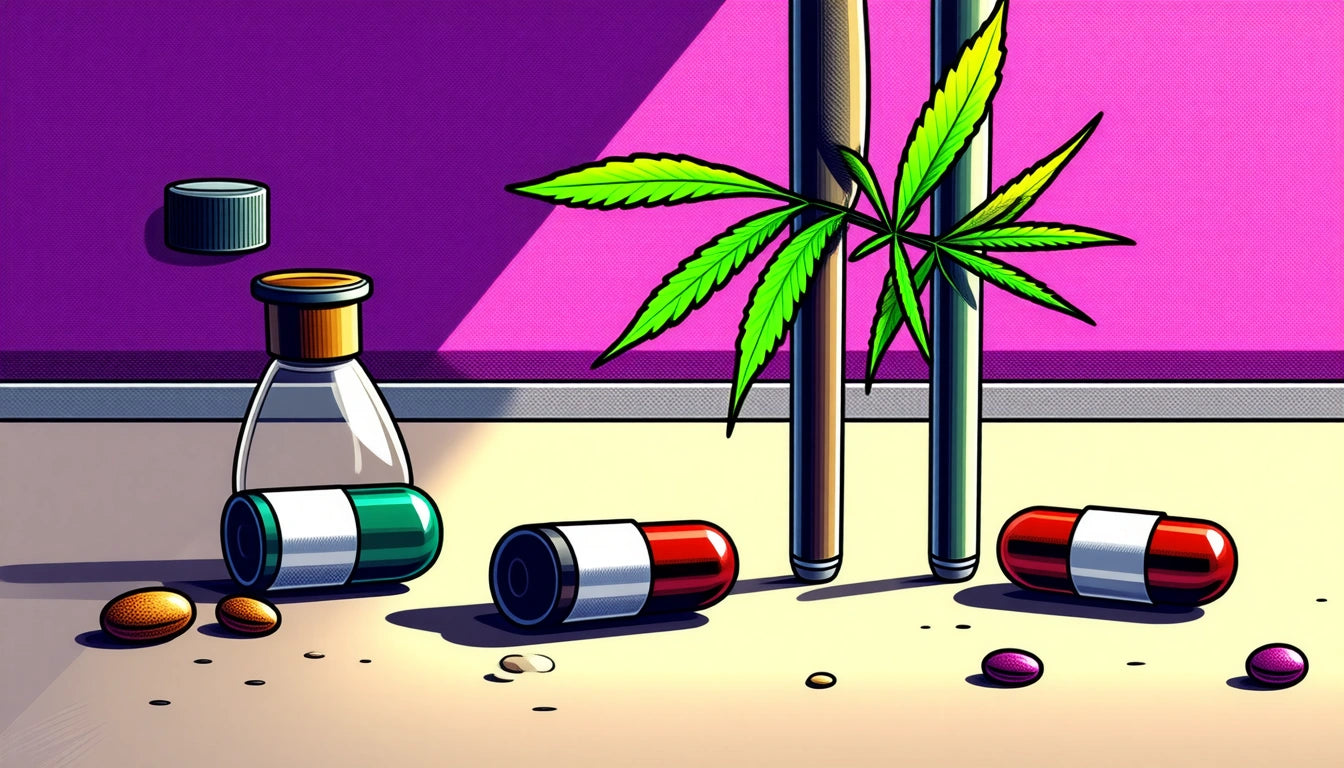
compliance
Can Smoking One Joint Affect Your Drug Test Results?
Table of Contents
THC Content in a Typical Joint
Detection Windows for Cannabis in Drug Tests
Types of Drug Tests and Their Sensitivity
Factors That Influence Detection
Occasional vs. Regular Users: Different Outcomes
Strategies for Minimizing Detection Risk
The question of whether smoking a single joint will show up on a drug test is common among occasional cannabis users. While the simple answer is that yes, even one joint can potentially trigger a positive result, the reality is more nuanced and depends on multiple variables including test type, timing, and individual physiology.THC Content in a Typical JointTo understand detection risk, it's important to know how much THC you're consuming. A typical joint contains approximately 0.3 to 0.5 grams of cannabis, though this can vary widely. With modern strains averaging 15-20% THC content, a single joint might deliver anywhere from 45 to 100mg of THC into your system.The potency of cannabis products has increased substantially over the years. According to research on joint potency, today's cannabis can be three times stronger than what was available in the 1990s, meaning even small amounts can introduce significant THC into your bloodstream.Detection Windows for Cannabis in Drug TestsTHC metabolites, primarily THC-COOH, remain in your system long after the psychoactive effects wear off. Here's how long cannabis typically remains detectable:
Urine tests: 3-30 days (depending on usage frequency)
Blood tests: 1-2 days for occasional users, up to 7 days for regular users
Saliva tests: 24-72 hours
Hair tests: Up to 90 days (requires regular use to detect)
For a single joint, an occasional user might test positive on a urine test for 3-4 days, though this window can be shorter or longer based on individual factors.Highlight: Even one joint can potentially trigger a positive drug test result for up to 3-4 days in occasional users, with detection times varying based on test type and individual metabolism.Types of Drug Tests and Their SensitivityDifferent testing methods have varying sensitivity levels:Urine TestsThe most common screening method, urine tests typically have a THC-COOH threshold of 50 ng/mL for initial screening, with confirmation tests using a lower threshold of 15 ng/mL. A single joint could potentially put an occasional user above these thresholds for several days.Blood TestsThese measure active THC rather than metabolites, making them better indicators of recent use. Blood tests are less common for employment screening but more frequent in situations involving impairment assessment.Saliva TestsThese detect recent use (within 24-72 hours) and are becoming more popular for roadside testing. A joint smoked the evening before could potentially trigger a positive result the next morning.Hair TestsWhile highly sensitive for long-term detection, hair tests typically don't effectively capture single-use events. They're designed to identify patterns of regular use over months rather than isolated incidents.When preparing cannabis products for testing, proper storage is essential. Many professionals use specialized child-resistant caps and containers to maintain sample integrity and prevent contamination before laboratory analysis.Factors That Influence DetectionSeveral variables affect how long THC remains detectable after smoking a single joint:
Metabolism rate: Individuals with faster metabolisms tend to clear THC more quickly
Body fat percentage: THC is fat-soluble, so higher body fat can lead to longer detection windows
Hydration level: Well-hydrated individuals may dilute urine concentration (though this doesn't eliminate metabolites)
Joint potency: Higher THC content leads to more metabolites and potentially longer detection
Smoking method: Different smoking methods affect THC absorption rates
Occasional vs. Regular Users: Different OutcomesFor someone who hasn't used cannabis in months, a single joint will likely clear their system much faster than for a regular user. This is because THC accumulates in fat cells over time with repeated use.Regular users develop a buildup of THC metabolites that can take weeks to fully clear. Even after abstaining, these stored metabolites gradually release back into the bloodstream and appear in urine tests. Therefore, a regular user who smokes just one joint before a test faces a much higher detection risk than a true occasional user.Understanding joint composition and potency can help users make more informed decisions about consumption, especially if they may face testing.Practical Considerations for Testing SituationsIf you're concerned about an upcoming drug test after smoking a joint, consider these practical points:
The more time between consumption and testing, the better your chances of passing
Hydration and exercise may help, but their effects are limited and not guaranteed
Home test kits can provide preliminary results but may not match lab sensitivity
Attempting to cheat tests with additives or substitution carries significant risks
Being informed about cannabis storage and discretion is important for legal compliance
The safest approach is always abstinence well before any anticipated testing period. For those using cannabis medicinally in legal states, it's advisable to inform testing authorities and provide documentation of legal medical use where applicable.While a single joint presents a lower risk than regular use, the only way to guarantee a negative result is to abstain from cannabis completely for a sufficient period before testing. Understanding these factors can help individuals make informed decisions about cannabis use in contexts where testing may occur.
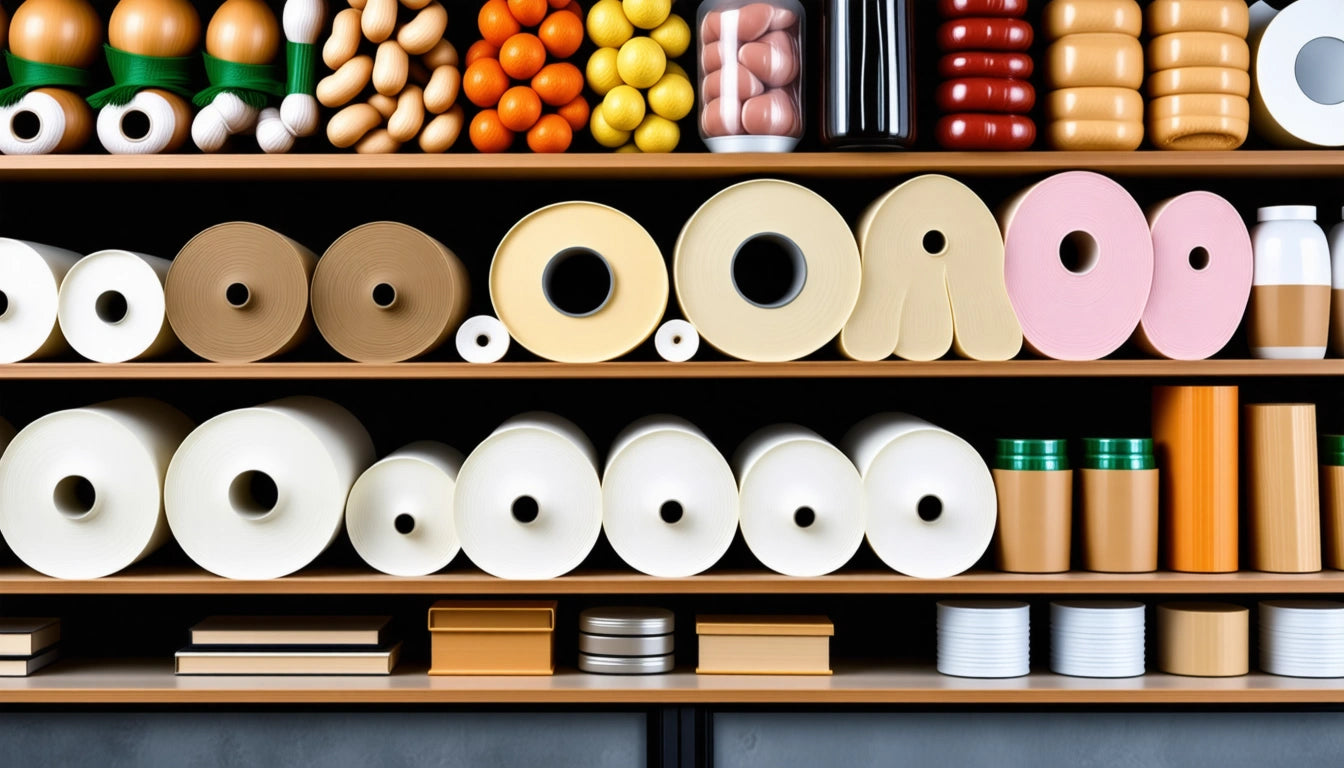
flower
How Long Do Pre-Rolls Last? Understanding Shelf Life and Storage
Table of Contents
Typical Shelf Life of Pre-Rolls: What to Expect
Factors Affecting Pre-Roll Longevity
Proper Storage Techniques for Maximum Freshness
Signs Your Pre-Rolls Have Gone Bad
Extending Pre-Roll Shelf Life: Best Practices
Freshness Preservation: Packaging Solutions for Pre-Rolls
Pre-rolls offer convenience for cannabis consumers, but their shelf life is a common concern. Understanding how long pre-rolls stay good and implementing proper storage techniques can help maintain their quality and potency over time. This guide explores the shelf life of pre-rolls, factors affecting their longevity, and best practices for storage.Typical Shelf Life of Pre-Rolls: What to ExpectOn average, properly stored pre-rolls can last between 6 months to 1 year before noticeable degradation occurs. However, this timeframe varies significantly based on several factors:
Freshness of cannabis used in the pre-roll
Storage conditions (temperature, humidity, light exposure)
Quality of packaging
Presence of additives or infusions
According to research on pre-roll shelf life, cannabis compounds begin to degrade naturally over time regardless of storage conditions, but proper handling can significantly slow this process.Factors Affecting Pre-Roll LongevityEnvironmental ConditionsThe three primary environmental factors that determine how long pre-rolls last include:
Temperature: Heat accelerates terpene evaporation and cannabinoid degradation
Humidity: Too much moisture promotes mold growth; too little dries out the cannabis
Light exposure: UV light breaks down cannabinoids, particularly THC
Packaging QualityThe container or wrapper used for pre-rolls significantly impacts their shelf life. Premium pre-rolls often come in airtight tubes or containers that protect against environmental factors. Many producers use specialized mylar bags with humidity control features that help maintain optimal moisture levels and extend how long pre-rolls stay good.Highlight: Pre-rolls stored in airtight containers away from heat, light, and humidity can maintain their quality for up to a year, while improperly stored products may degrade within weeks.Proper Storage Techniques for Maximum FreshnessTo maximize how long pre-rolls are good for, follow these storage best practices:Ideal Storage Containers
Glass jars with airtight seals
Original packaging if designed for long-term storage
Specialized cannabis storage containers with humidity control
Metal tubes with rubber seals
Avoid plastic bags or containers that aren't airtight, as these allow air exchange that accelerates degradation.Optimal Environmental ConditionsStore pre-rolls in:
Cool environments (60-70 °F/15-21 °C)
Dark locations away from direct sunlight
Spaces with controlled humidity (59-63% RH is ideal)
As detailed in this guide on mastering pre-rolls, proper storage is just as important as quality rolling techniques for maintaining product integrity.Signs Your Pre-Rolls Have Gone BadWhile pre-rolls don't "expire" in the traditional sense, they do degrade over time. Here are indicators that your pre-rolls have gone bad:
Visual cues: Discoloration, visible mold (white powdery or fuzzy spots)
Aroma changes: Musty, hay-like, or ammonia smell instead of cannabis's typical scent
Texture issues: Extremely dry and crumbly or overly damp
Taste differences: Harsh, unpleasant flavor when smoked
Effect reduction: Noticeably weaker effects than when fresh
If you notice any of these signs, it's best to discard the pre-roll, as smoking degraded or moldy cannabis can be unpleasant or potentially harmful.Extending Pre-Roll Shelf Life: Best PracticesTo extend how long pre-rolls last, consider these advanced techniques:Humidity Control SolutionsHumidity control packs designed specifically for cannabis can maintain optimal moisture levels. These two-way humidity control products can either add or remove moisture as needed to maintain the ideal range of 59-63% relative humidity.Temperature ManagementSome consumers store pre-rolls in refrigerators, but this approach requires caution. If using refrigeration:
Ensure pre-rolls are in completely airtight containers
Allow pre-rolls to return to room temperature before opening to prevent condensation
Consider using a dedicated mini-fridge to avoid food odor contamination
According to safety considerations for pre-rolls, improper storage can not only reduce potency but also potentially introduce harmful contaminants.Freshness Preservation: Packaging Solutions for Pre-RollsFor businesses and consumers alike, packaging plays a crucial role in preserving pre-roll freshness. The cannabis industry has developed specialized packaging options to extend shelf life:
Nitrogen-flushed containers that remove oxygen before sealing
UV-resistant tubes and containers that block harmful light
Vacuum-sealed options that eliminate air exposure
Multi-layer packaging with moisture barriers
When purchasing pre-rolls, look for products with manufacturing dates and properly sealed packaging. Some premium brands even include humidity control elements within their packaging to ensure products remain fresh until opening.For businesses looking to maximize the shelf life of their pre-roll products, investing in quality packaging is essential. Many producers now use specialized pre-roll packaging techniques that can significantly extend how long pre-rolls stay good on dispensary shelves.Understanding how long pre-rolls last and implementing proper storage techniques benefits both consumers and businesses in the cannabis industry. By following the guidelines outlined above, you can ensure your pre-rolls maintain their quality, potency, and flavor profile for the maximum possible time.
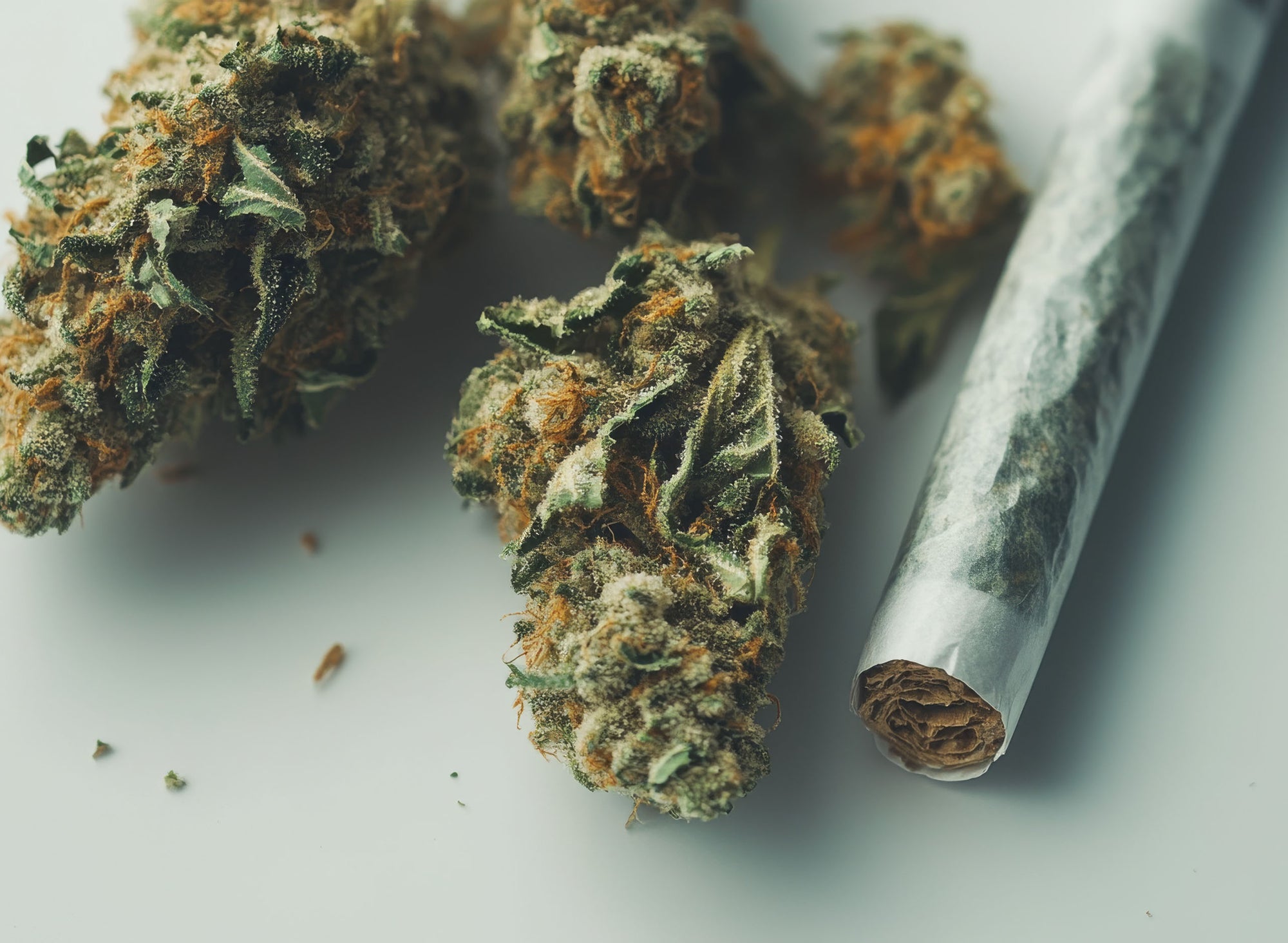
business tips
Understanding RAW Papers and Filters: Do They Come Together?
Table of Contents
RAW Papers and Filters: A Complete Overview
Do RAW Papers Come with Filters? Package Options Explained
Types of RAW Paper Filters and Their Benefits
How to Properly Use RAW Paper Filters
Alternatives to RAW Paper Filters
Choosing the Right Combination for Your Needs
Understanding RAW Papers and Filters: Do They Come Together?RAW rolling papers have become a staple in the smoking community, known for their natural, unrefined qualities and commitment to purity. A common question among both new and experienced users is whether RAW papers come with filters included, or if these must be purchased separately. This comprehensive guide explores everything you need to know about RAW papers and filters, their packaging options, and how to select the best combination for your needs.RAW Papers and Filters: A Complete OverviewRAW papers are made from unbleached, natural plant fibers, offering a clean smoking experience without added chemicals or dyes. Their popularity stems from this commitment to purity, as detailed in this comprehensive guide to RAW rolling papers.RAW filter tips (also called crutches or roaches) are designed to complement these papers. They serve several important functions:
Preventing plant material from entering your mouth
Providing structural stability to your roll
Allowing airflow while filtering particulates
Reducing waste by allowing you to smoke more of your material
While exploring options beyond RAW, we also offer premium alternatives like OCB cones that come pre-rolled with filters already attached, saving time for those who prefer convenience.Do RAW Papers Come with Filters? Package Options ExplainedThe answer to whether RAW papers come with filters depends entirely on which product you purchase. RAW offers several packaging options:Standard RAW Papers (Without Filters)Most basic packs of RAW papers do not include filters. These typically come in various sizes such as:
Single Wide (70mm)
1 ¼ Size (79mm)
King Size (110mm)
King Size Slim
RAW Papers with Tips IncludedRAW does offer specific products that include both papers and filter tips in the same package:
RAW Connoisseur packs (papers + tips)
RAW Black Connoisseur (premium papers + tips)
RAW Artesano packs (papers, tips, and a rolling tray)
These combination packs are ideal for beginners or those who prefer the convenience of having everything in one package, as highlighted in this ultimate guide to buying RAW rolling papers.Types of RAW Paper Filters and Their BenefitsRAW offers several types of filter paper products, each designed for specific preferences:Standard RAW TipsThese are the classic filter tips that come in a small booklet. They're unbleached, chlorine-free, and made from natural plant fibers.RAW Pre-Rolled TipsFor those who prefer convenience, pre-rolled tips save time and provide consistency. They come ready to use, eliminating the need to roll your own filter.RAW Perforated TipsThese feature perforations that make it easier to roll the perfect filter by providing fold lines. They're particularly helpful for beginners still mastering the art of rolling with RAW papers.RAW Glass TipsA reusable alternative to paper filters, RAW glass tips are made from borosilicate glass and provide superior filtration and cooling. They're environmentally friendly since they can be cleaned and reused indefinitely.Highlight: While many standard RAW paper packs don't include filters, specialty packs like the Connoisseur and Artesano lines come with both papers and filters in one convenient package.How to Properly Use RAW Paper FiltersUsing RAW filters effectively enhances your rolling experience:Basic Filter Rolling Technique
Take a RAW filter tip and make an accordion fold at one end (typically 3-4 folds)
Roll the remaining paper around these folds to create a cylindrical shape
Place the filter at one end of your rolling paper
Add your herb material and roll as usual, ensuring the filter stays in place
For those exploring different rolling styles and techniques, this guide to the diverse world of RAW papers offers additional insights on pairing the right papers with appropriate filters.Alternatives to RAW Paper FiltersWhile RAW filters are popular, several alternatives exist:
OCB Filters: Similar to RAW but with slightly different material composition
Elements Filters: Made from rice paper for a clean taste
Pre-rolled Cones: Products like those found in our RAW cones collection come with built-in filters
Homemade Alternatives: Some users create makeshift filters from business cards or thick paper (though not recommended due to potential chemicals)
When considering alternatives, it's important to prioritize products made from natural materials without harmful chemicals. Safety concerns are addressed in detail in this article exploring RAW organic papers' safety.Choosing the Right Combination for Your NeedsSelecting the ideal RAW papers and filters combination depends on your specific preferences and experience level:
For Beginners: RAW Connoisseur packs that include both papers and tips offer convenience and ensure compatibility
For Experienced Users: Purchasing papers and filters separately allows for customization of size and material preferences
For Convenience Seekers: Pre-rolled cones with built-in filters eliminate the rolling process entirely
For Eco-conscious Users: Reusable glass tips paired with organic RAW papers minimize environmental impact
Understanding your priorities helps determine whether you should purchase a combination pack or separate products. Factors like frequency of use, rolling skill, and portability needs all influence the ideal setup for your situation.Ultimately, whether RAW papers come with filters depends on the specific product you choose. While many standard packs require separate filter purchases, specialty packs offer the convenience of having everything in one package. By understanding the various options available, you can select the perfect combination to enhance your rolling experience.
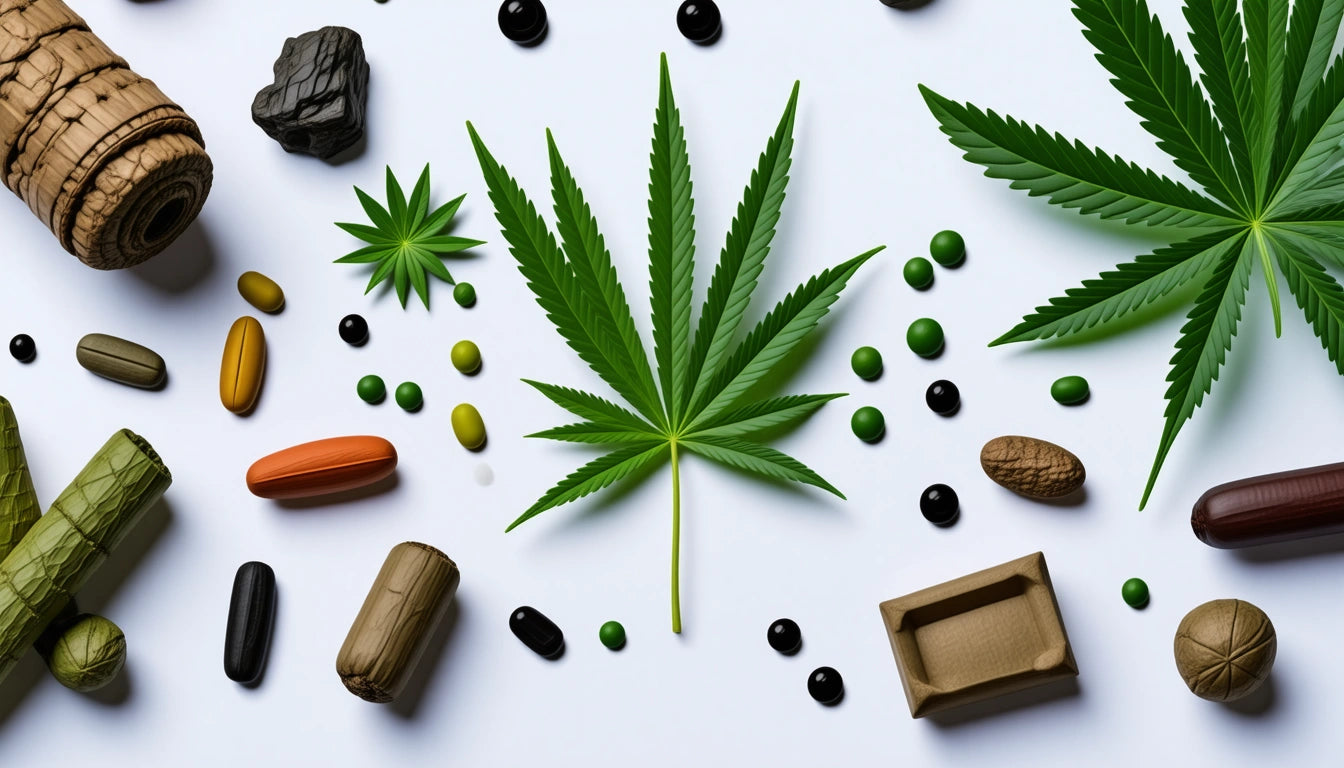
business tips
How Many Grams Are in a Joint? Understanding Cannabis Measurements
Table of Contents
Standard Joint Measurements: How Many Grams in a Joint
Factors Affecting Joint Size and Weight
Comparing Joints to Other Consumption Methods
Cost Efficiency of Joints vs. Other Consumption Methods
Maximizing Your Cannabis Experience: Tools and Techniques
Understanding how many grams are in a joint is essential for both new and experienced cannabis consumers. Whether you're budgeting your stash, preparing for a social gathering, or simply curious about standard measurements, knowing joint weights helps you make informed decisions about consumption and purchasing.Standard Joint Measurements: How Many Grams in a JointThe average joint contains approximately 0.3 to 0.5 grams of cannabis, though this can vary based on several factors. According to industry standards, a typical joint uses about 0.4 grams of ground flower.For context:
A small or "pinner" joint: 0.25-0.3 grams
A standard joint: 0.3-0.5 grams
A larger joint: 0.5-0.75 grams
A king-size joint: 0.75-1+ grams
These measurements provide a baseline, but personal preference and experience level often dictate actual quantities used. Many pre-rolled joints sold in dispensaries contain 0.5 grams, offering a standardized experience for consumers.Factors Affecting Joint Size and WeightRolling Paper SizeThe size of rolling papers significantly impacts how many grams of pot in a joint:
Single wide papers: Typically hold 0.25-0.5 grams
1 ¼ papers (standard): Hold 0.3-0.75 grams
King size papers: Can accommodate 0.75-1.5 grams
Using quality grinder machines can help achieve the perfect consistency for efficient packing, especially when preparing cannabis for larger joints or multiple rolls from the same batch.Grinding and Packing TechniqueHow finely the cannabis is ground and how tightly it's packed affects the final weight. Loosely packed joints use less material but may burn unevenly, while densely packed ones use more cannabis but provide a slower, more consistent burn.Highlight: The average joint contains 0.3 to 0.5 grams of cannabis, though personal preference and rolling technique can significantly affect this amount.Comparing Joints to Other Consumption MethodsJoints vs. EdiblesMany consumers wonder how many gummies equal a joint in terms of effects. This comparison is complicated because the body processes THC differently when smoked versus ingested:
A 0.5g joint with 20% THC contains approximately 100mg of THC
Due to combustion and exhalation, only about 20-30% of this THC (20-30mg) enters the bloodstream
A 10mg edible can produce effects comparable to a joint for many users because edible THC is processed by the liver into 11-hydroxy-THC, which is more potent
This explains why lower milligram counts in edibles can produce significant effects compared to smoking.THC Content ConsiderationsThe question of how much THC is in a typical joint depends on the potency of the cannabis used:
15% THC cannabis: A 0.5g joint contains approximately 75mg total THC
20% THC cannabis: A 0.5g joint contains approximately 100mg total THC
25% THC cannabis: A 0.5g joint contains approximately 125mg total THC
Remember that the total THC content differs from the amount actually absorbed during consumption.Cost Efficiency of Joints vs. Other Consumption MethodsUnderstanding how many grams is a joint helps consumers evaluate cost efficiency:Maximizing Your PurchaseKnowing how many joints you can roll with an eighth (3.5 grams) of cannabis helps with budgeting:
Using 0.3g per joint: Approximately 11-12 joints
Using 0.5g per joint: Approximately 7 joints
Using 0.7g per joint: Approximately 5 joints
This calculation extends to larger quantities as well, helping consumers plan their purchases according to their consumption habits.Pre-Rolls vs. DIY RollingPre-rolled joints typically cost more per gram than purchasing flower separately. However, they offer convenience and consistency that many consumers value. The cost and consumption insights show that rolling your own can save 30-50% compared to pre-rolls, depending on the market.Maximizing Your Cannabis Experience: Tools and TechniquesGetting the most from your cannabis involves more than just knowing how many grams are in a joint. The right tools and techniques can enhance your experience:
Invest in quality grinders for consistent texture
Use humidity packs to maintain freshness
Consider a scale for precise measurements
Practice rolling techniques to minimize waste
For those who regularly prepare multiple joints, learning efficient rolling techniques and using the right tools can significantly improve the experience while making your cannabis supply last longer.Understanding cannabis measurements helps consumers make informed decisions about their purchases and consumption habits. Whether you're rolling a personal joint or preparing for a social gathering, knowing how many grams are in a joint provides a foundation for responsible and enjoyable cannabis use.
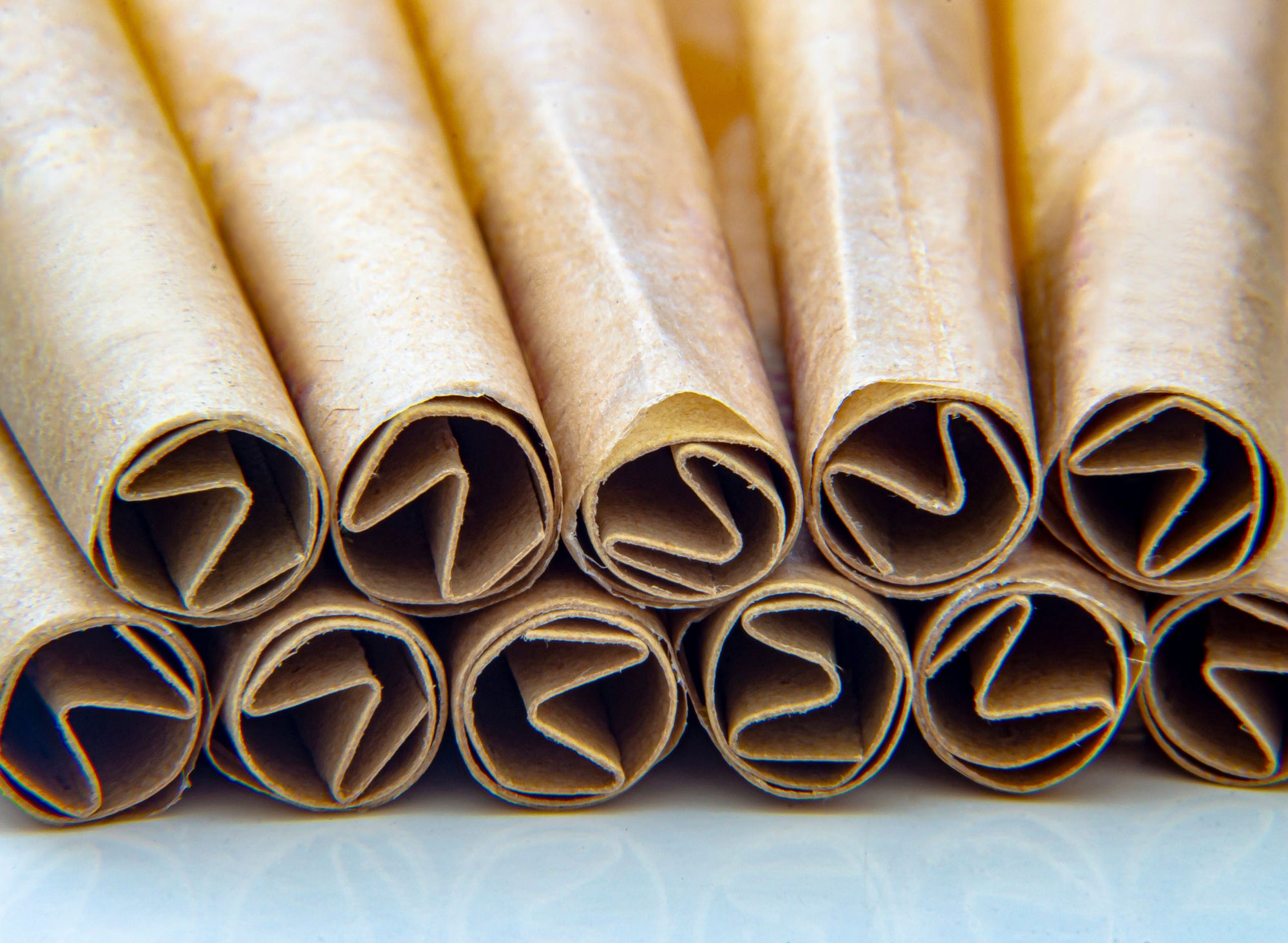
informational
Are RAW Rolling Products Biodegradable?
Table of Contents
RAW Biodegradability: An Overview
RAW Papers: Biodegradable Composition and Materials
RAW Filters and Tips: Biodegradability Assessment
RAW Cones: Environmental Impact and Decomposition
Comparing RAW to Other Eco-Friendly Alternatives
Sustainable Smoking Practices: Beyond Biodegradability
nnAre RAW Rolling Products Biodegradable?nnThe environmental impact of smoking accessories has become increasingly important to conscious consumers. RAW has positioned itself as an environmentally responsible brand, but many users still question: are RAW papers biodegradable? What about their filters, tips, and cones? This comprehensive guide examines the biodegradability of RAW's product line and what that means for environmentally conscious smokers.nnRAW Biodegradability: An OverviewnnRAW products are widely marketed as natural and unrefined. The brand emphasizes its commitment to creating products free from harmful chemicals and additives. This natural approach extends to their environmental claims about biodegradability.nnAccording to information about RAW rolling papers composition, most RAW products are made from plant-based materials, which inherently supports their biodegradability claims. However, biodegradability varies across their product range and depends on specific materials used in each item.nnRAW Papers: Biodegradable Composition and MaterialsnnRAW rolling papers are indeed biodegradable. They're made primarily from unbleached plant fibers, specifically hemp and flax. The absence of chemicals like chlorine bleach not only makes them more natural for smoking but also enhances their biodegradability.nnThe biodegradability of RAW papers is attributed to several factors:nnnUse of unrefined plant materialsnAbsence of chemical treatmentsnNatural gum arabic as an adhesive (derived from acacia trees)nNo added preservatives or artificial ingredientsnnnWhen examining the diverse world of RAW papers, you'll find that both their standard and organic varieties maintain this biodegradable quality. The RAW Organic Hemp papers, in particular, are even more environmentally friendly due to their organic cultivation processes.nnRAW Filters and Tips: Biodegradability AssessmentnnAre RAW filters biodegradable? Yes, RAW filter tips are biodegradable as they're made from unbleached plant fibers similar to their papers. The standard RAW filter tips are composed of chlorine-free wood pulp that will naturally decompose over time.nnRAW offers several filter options with varying biodegradability profiles:nnnStandard Tips: Made from unbleached paper, fully biodegradablenPerfecto Tips: Contain plant-based charcoal filters, biodegradable but may take longernPre-Rolled Tips: Same biodegradable material as standard tipsnnnWhen properly disposed of, these filters will break down naturally. However, as this comprehensive guide to RAW filter tips explains, the decomposition time can vary based on environmental conditions.nnLooking for eco-friendly alternatives? We offer environmentally conscious smoking accessories that complement sustainable consumption practices while maintaining quality and performance.nnRAW Cones: Environmental Impact and DecompositionnnAre RAW cones biodegradable? Yes, RAW pre-rolled cones maintain the same biodegradable properties as their papers. Since they're constructed from the same unbleached, natural plant fibers, they will decompose when discarded properly.nnThe biodegradability of RAW cones extends to most components:nnnThe cone paper itself (hemp or flax-based)nThe filter tip included with the conenThe natural gum used to seal the conennnIt's worth noting that while the paper components of RAW cones are biodegradable, any packaging materials may have different environmental properties. The plastic tubes that some RAW cones come in are not biodegradable, though they are recyclable in many areas.nnFor those interested in exploring RAW's cone offerings, their collection includes various sizes and styles while maintaining the same biodegradable paper composition.nnComparing RAW to Other Eco-Friendly AlternativesnnWhile RAW products are biodegradable, they're not the only eco-friendly option on the market. Several brands now compete in the sustainable smoking accessories space:nnnnBrandnBiodegradabilitynMaterialsnnnRAWnHighnUnbleached hemp and flaxnnnElementsnHighnRice papernnnOCB OrganicnHighnOrganic hempnnnHaranVery HighnSustainable bamboo and hempnnnnFor those particularly concerned about environmental impact, RAW's organic line offers additional ecological benefits through their sustainable farming practices.nnSustainable Smoking Practices: Beyond BiodegradabilitynnWhile using biodegradable products like RAW papers, filters, and cones is a positive step toward environmental responsibility, truly sustainable consumption requires additional practices:nnnProper disposal of all smoking materials (never litter filters or papers)nComposting used papers and filters when possiblenRecycling packaging materialsnConsidering reusable alternatives for certain componentsnSupporting brands with comprehensive sustainability programsnnnUnderstanding the complete lifecycle of products is essential. For instance, while RAW organic papers are safe and free from ethylene oxide, their environmental benefit is lost if improperly discarded.nnThe biodegradability of RAW products represents just one aspect of their environmental profile. Their commitment to natural materials, minimal processing, and additive-free composition aligns with broader ecological values that many consumers seek today.nnFor those looking to minimize their environmental footprint while enjoying their smoking experience, RAW's biodegradable papers, filters, and cones offer a responsible choice that doesn't compromise on quality or experience.
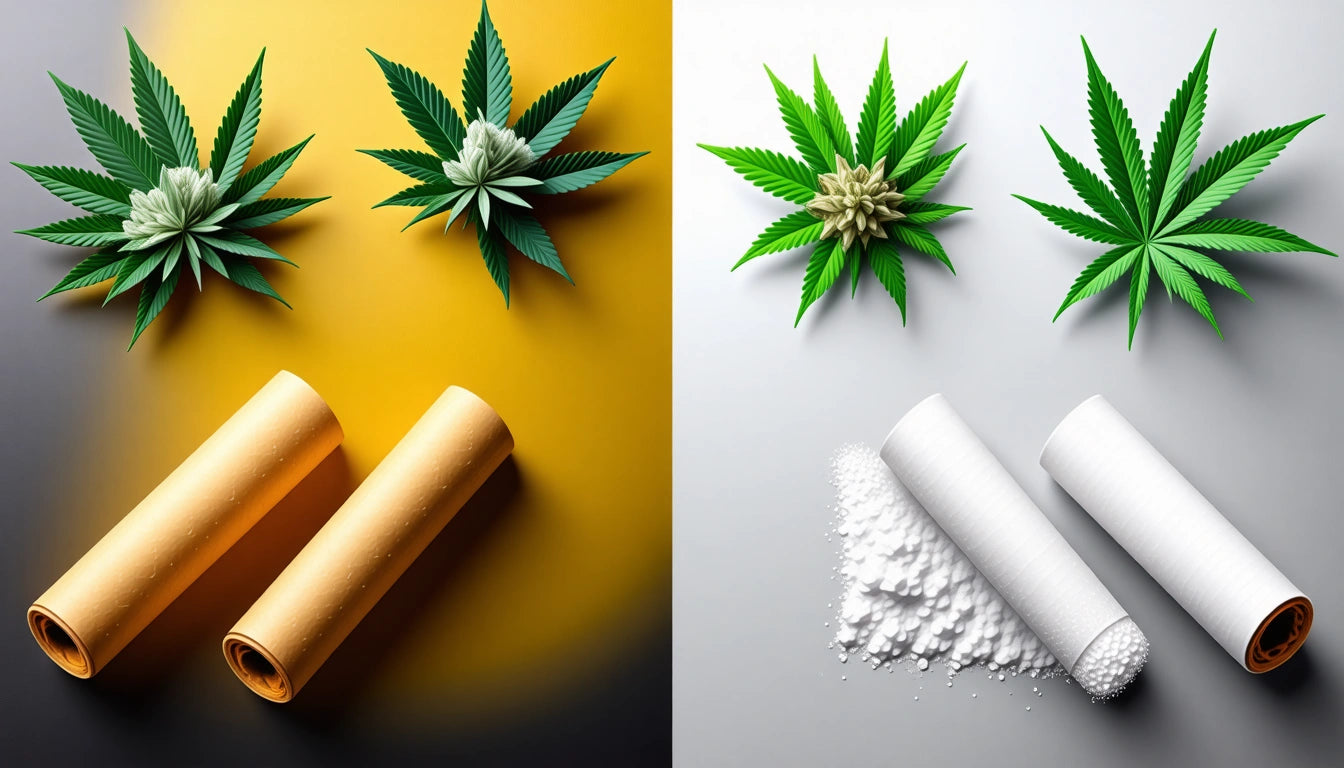
branding
Bleached vs. Unbleached Cones: Which is Better?
Table of Contents
Understanding Cone Basics: Bleached vs Unbleached
Health Considerations: What Goes Into Your Lungs
Flavor Impact: How Processing Affects Your Experience
Environmental Factors: Sustainability in Pre-Roll Production
Visual Appeal and Branding Considerations
Making Your Choice: Factors to Consider When Selecting Cones
The debate between bleached vs unbleached cones has become increasingly important as consumers grow more conscious about what they're smoking. Pre-rolled cones have revolutionized the cannabis consumption experience, offering convenience and consistency. However, the processing methods behind these products can significantly impact everything from flavor to potential health effects.Understanding Cone Basics: Bleached vs UnbleachedPre-rolled cones come in two primary varieties: bleached and unbleached. The distinction lies in the processing method of the paper used to create them.Bleached ConesBleached cones undergo chemical processing to achieve their characteristic white appearance. Manufacturers typically use chlorine or hydrogen peroxide to strip the natural color from the paper fibers. The result is a clean, uniform white cone that many consumers find visually appealing.According to experts on smoking the best cones, bleached papers often burn more evenly and consistently due to their uniform composition, which can be advantageous for commercial pre-roll production.Unbleached ConesUnbleached cones maintain their natural light brown color, resulting from minimal processing. These cones, like those featured in guides about RAW cones, skip the chemical bleaching process, preserving the natural state of the plant fibers used in production.The manufacturing process typically involves fewer chemicals and additives, which appeals to environmentally conscious consumers and those concerned about inhaling potential chemical residues.Highlight: The choice between bleached and unbleached cones ultimately comes down to personal preference, health considerations, and environmental values.Health Considerations: What Goes Into Your LungsWhen comparing bleached vs unbleached cones, health concerns often top the list of consumer considerations.Chemical ResiduesBleached papers may contain trace amounts of chemicals used in the whitening process. While modern bleaching methods have become safer than older chlorine-based processes, some consumers remain concerned about potentially inhaling these residues.Unbleached papers, by contrast, undergo less chemical processing. Many cannabis enthusiasts prefer these natural options when seeking products with minimal additives, similar to how they might select high-quality, unprocessed storage solutions for their flower to maintain purity.Burning PropertiesThe chemicals used in bleaching can affect how the paper burns. Some users report that bleached papers burn faster and hotter, which could potentially create a harsher smoking experience. Unbleached papers typically burn more slowly and at lower temperatures, which some consumers find creates a smoother experience.Flavor Impact: How Processing Affects Your ExperienceFor cannabis connoisseurs, preserving the plant's natural flavors and terpene profiles is essential.Taste NeutralityUnbleached cones are often preferred by flavor purists who believe the natural papers impart less of their own taste to the smoking experience. The minimal processing means fewer compounds that could potentially interfere with the cannabis's natural flavor profile.Bleached papers, while generally designed to be taste-neutral, may introduce subtle flavor changes that particularly sensitive palates can detect. As noted in comprehensive guides on hemp cones, material composition significantly affects taste experience.Terpene PreservationThe burning temperature of the paper can affect how terpenes and cannabinoids are released during combustion. Some cannabis experts suggest that the lower burning temperature of unbleached papers may better preserve delicate terpene profiles, enhancing the overall experience.Environmental Factors: Sustainability in Pre-Roll ProductionEnvironmental impact has become increasingly important to consumers across all industries, including cannabis.Production FootprintThe bleaching process requires additional chemicals, water, and energy compared to producing unbleached papers. This increased resource usage translates to a larger environmental footprint.Unbleached cones generally require less processing, fewer chemicals, and reduced energy consumption during manufacturing. For environmentally conscious brands and consumers, this reduced impact can be a decisive factor.BiodegradabilityBoth bleached and unbleached papers will eventually biodegrade, but unbleached papers typically break down more readily and with fewer potential chemical residues released into the environment.Visual Appeal and Branding ConsiderationsFor cannabis brands, the visual presentation of pre-rolls matters significantly for market positioning.Consumer PerceptionBleached white cones often convey a sense of cleanliness and purity to consumers, which can be advantageous for brands targeting mainstream markets. The bright white background also makes branding elements and logos stand out more vividly.Unbleached cones, with their natural appearance, often appeal to consumers seeking an authentic, back-to-basics experience. They visually signal environmental consciousness and minimal processing, which aligns well with organic and natural brand positioning.As detailed in guides on pre-rolled cones and accessories, the visual presentation of pre-rolls significantly impacts consumer perception and brand identity.Making Your Choice: Factors to Consider When Selecting ConesWhen deciding between bleached and unbleached cones for your personal use or brand, consider these key factors:
Target audience preferences: Understand what matters most to your consumers, whether it's visual appeal, environmental concerns, or flavor purity.
Brand alignment: Choose the option that best reflects your brand values and market positioning.
Production considerations: For commercial operations using cone filling machines, consider which type performs better in your specific equipment.
Price point: Unbleached cones sometimes command a premium price, which may affect your margins or retail pricing.
Regulatory compliance: Some markets have specific regulations regarding paper processing and additives.
The cannabis industry continues to evolve toward greater transparency and consumer education. Whether you choose bleached or unbleached cones, providing clear information about your materials and processing methods helps build consumer trust and loyalty.Ultimately, both options have their place in the market. By understanding the differences between bleached vs unbleached cones and aligning your choice with your values and needs, you can enhance both the smoking experience and your brand reputation in this growing industry segment.

flower
How Many Milligrams Are in a Joint?
Table of Contents
Understanding Joint Measurements: Grams vs. Milligrams
Calculating THC Content in Milligrams
Factors Affecting Joint Potency
Comparing Joint Dosage to Other Consumption Methods
Measuring for Consistent Dosing
Practical Dosage Recommendations for Different Users
Understanding how many milligrams are in a joint is essential for both recreational users and medical cannabis patients seeking consistent dosing. Unlike edibles with clearly labeled THC content, joints require some calculation to determine their potency in milligrams. This guide breaks down the science behind joint measurements and helps you understand exactly what you're consuming.Understanding Joint Measurements: Grams vs. MilligramsWhen discussing cannabis quantities, there's often confusion between weight measurements (grams) and active compound measurements (milligrams of THC/CBD). As explained in this guide, the typical joint contains approximately 0.3 to 0.5 grams of cannabis flower, though this can vary based on rolling style and personal preference.However, knowing the weight alone doesn't tell you how many milligrams of active compounds you're consuming. For that, we need to consider the flower's potency percentage.Calculating THC Content in MilligramsTo determine how many milligrams of THC are in a joint, you need to know both the weight of cannabis and its potency percentage. Here's the formula:THC in milligrams = Grams of cannabis × THC percentage × 1000For example:
A 0.5g joint with 15% THC flower contains: 0.5 × 0.15 × 1000 = 75mg THC
A 0.3g joint with 20% THC flower contains: 0.3 × 0.20 × 1000 = 60mg THC
A 1g joint with 18% THC flower contains: 1 × 0.18 × 1000 = 180mg THC
According to this analysis, the average joint contains between 60-150mg of total THC, depending on size and potency.Highlight: A typical 0.5g joint made with 20% THC cannabis contains approximately 100mg of THC, though bioavailability means you'll absorb only a portion of this amount when smoking.Factors Affecting Joint PotencyBioavailability ConsiderationsIt's crucial to understand that the total THC content in milligrams doesn't equal the amount your body absorbs. When smoking, bioavailability (the proportion of a substance that enters circulation) ranges from 10-35%, meaning much of the THC is lost to combustion or exhaled.For a joint containing 100mg total THC, you might only absorb 20-35mg into your bloodstream. This differs significantly from edibles, where bioavailability is lower but more consistent.Quality and PreparationThe quality of your grind significantly impacts how evenly your joint burns and how efficiently the THC is delivered. Using quality grinding equipment ensures consistent particle size for optimal burning and extraction of cannabinoids, resulting in more predictable dosing.Comparing Joint Dosage to Other Consumption MethodsUnderstanding how many milligrams are in a joint becomes particularly relevant when comparing different consumption methods:Joints vs. EdiblesAs this comparison shows, edibles are measured directly in milligrams of THC, typically ranging from 5-100mg per serving. The effects of 10mg THC in an edible might roughly compare to a few puffs of a medium-potency joint, though the experiences differ significantly in onset time and duration.Joints vs. VaporizersVaporizers typically offer higher bioavailability (40-60%) compared to joints. This means that vaping 0.3g of 15% THC flower might deliver more usable THC than smoking 0.5g of the same flower in a joint.Measuring for Consistent DosingFor those seeking medicinal benefits or consistent experiences, measuring how many milligrams are in a joint is essential. Consider these approaches:
Use a digital scale to weigh your cannabis before rolling
Check lab testing results for accurate THC percentages
Consider pre-rolls with specified potency information
Track your consumption and effects in a journal
Precise measurement tools like scales accurate to 0.01g can help ensure consistency in your joints. These techniques can further help you control dosage by preserving partially smoked joints for later use.Practical Dosage Recommendations for Different UsersWhen considering how many milligrams are in a joint and how that translates to effects, different users have different needs:For BeginnersNew users should start with joints containing lower total THC content, around 30-50mg (typically a small 0.3g joint with 10-15% THC flower). Taking just 1-2 puffs provides a gentle introduction to cannabis effects.For Regular UsersRegular consumers might prefer joints with 75-100mg total THC. This consumption pattern aligns with moderate, regular use that balances effects with tolerance.For Medical PatientsMedical patients often benefit from precise dosing. Rather than focusing solely on how many milligrams are in a joint, many medical users track specific cannabinoid ratios (THC:CBD) and terpene profiles for targeted therapeutic effects.Understanding how many milligrams are in a joint helps consumers make informed decisions about their cannabis use. Whether you're seeking recreational enjoyment or medicinal benefits, knowing your dose in milligrams provides a foundation for consistent, predictable experiences.

